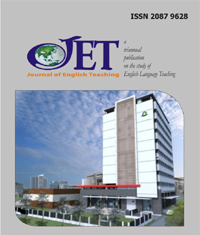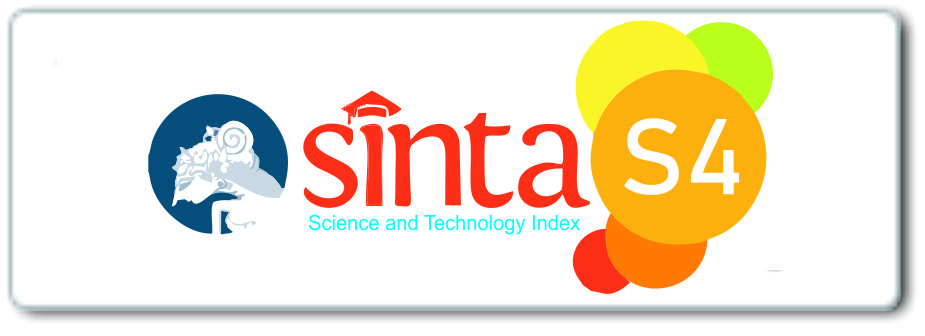The Effectiveness of Using Think Pair and Share Technique on Students’ English-Speaking Performance
DOI:
https://doi.org/10.33541/jet.v10i3.5634Keywords:
EFL, think pair and share, speaking performanceAbstract
Speaking is very crucial for English as a Foreign Language (EFL) learners. However, many students find it challenging to master due to the use of improper teaching and learning approaches. Research suggests that one teaching method that can effectively help to solve the problem is a strategy of the collaborative learning approach called Think Pair and Share (TPS). This study aimed to determine the effectiveness of using TPS on English-speaking skills for students at SMPN 117 Jakarta. Using a quasi-experimental design, this study involved 72 eleventh graders who were divided equally into the control group and the experimental group. Data was collected using pre-tests and post-tests and analyzed using SPSS version 26. The results showed there was a significant effect of using TPS on students' English-speaking performance but no significant difference between the speaking scores of male and female students, indicating that both male and female students benefit equally from TPS use. Based on the results, EFL teachers are recommended to implement this technique to help students develop their speaking performance.
References
Apriyanti, H. (2018). The effectiveness of “Find Someone Who” game toward students’ speaking skill (An experimental research of seventh-grade students junior high school at SMP Negeri 1 Kelapa Dua Tangerang) (Doctoral dissertation, Universitas Islam Negeri "Sultan Maulana Hasanuddin" Banten).
Asrifan, A. (2016). The effectiveness of Think-Pair-Share technique in improving students' speaking ability and interest. English Literature and Language Review, 2(3), 24-35.
Baek, J., & Lee, C. H. (2018). University students ’perceptions and engagement in mobile assisted blended learning in English speaking classes. Multimedia-Assisted Language Learning, 21(4). https://doi.org/10.15702/mall.2018.21.4.11
Bunaya, M. S. (2019, June). Improving speaking confidence by using Think Pair Share (TPS) teaching strategy to high school students. In 3rd International Conference on Current Issues in Education (ICCIE 2018) (pp. 349-355). Atlantis Press.
Chen, M. R. A., & Hwang, G. J. (2019). Effects of a concept mapping‐based flipped learning approach on EFL students’English speaking performance, critical thinking awareness and speaking anxiety. British Journal of Educational Technology, 51(3), 817-834. https://doi.org/10.1111/bjet.12887
Dao, H. (2017). Identify factors that negatively influence: Non-English major students’ speaking skills. Higher Education Research, 2(2), 35-43.
Dewi, Y. P. (2023). Improving students' speaking ability in expressing opinion through Think Pair Share: English. Journal of English Development, 3(01), 29-37.
Hamdan, R. K. A. (2017). The Effect of (Think-Pair-Share) Strategy on the Achievement of Third Grade Student in Sciences in the Educational District of Irbid. Journal of Education and Practice, 8(9), 88-95.
Hetika, H., Farida, I., & Sari, Y. P. (2017). Think Pair Share (TPS) as Method to Improve Student’ s Learning Motivation and Learning Achievement. Dinamika Pendidikan, 12(2), 125-135.
Kurjum, M., Muhid, A., & Thohir, M. (2020). Think-pair-share model as a solution to develop students’ critical thinking in Islamic studies: Is it effective? Cakrawala Pendidikan, 39(1), 144-155.
Nazara, S. (2011). Students’ perception of EFL speaking skill development. Journal of English Teaching,1(1), 28-43. https://doi.org/10.33541/jet.v1i1.50
Nwaubani, O.O., Ogbueghu, S.N., Adeniyi, K.D. & Eze, D.M. (2016). Effects of think-pair share (TPS) and student teams-achievement divisions (stad) instructional strategies on senior secondary school students’ achievement in economics. Australian Journal of Basic & Applied Science, 10(13), 1-9.
Pardede, P. (2016). Action Research in EFL Learning and Teaching. Paper presented in UKI’s English Education Department Collegiate Forum held on Friday, December 9, 2016
Putri, S. A. M. D. U., Ratminingsih, N. M., & Budasi, I. G. (2022). Quality of instructional media of multilingual thematic digital dictionary for elementary school students. E-Link Journal, 9(2), 112-124.
Rai, H. (2024). Role of collaborative learning for developing speaking skills of secondary level students. Gipan, 6(1), 71-79.
Reichardt, C. S. (2019). Quasi-experimentation: A guide to design and analysis. Guilford Publications.
Salma, N. (2020). Collaborative learning: An effective approach to promote language development. International Journal of Social Sciences & Educational Studies, 7(2), 57-61.
Sriyanda, R., & Priyana. J. (2024). Promoting Critical Thinking in Speaking Classes Using the Think-Pair-Share Technique. JOLLT Journal of Languages and Language Teaching, 12(4), 1913-1925. DOI: https://doi.org/10.33394/jollt.v12i4.12582
Syafii, M. L. (2018). Using the Think-Pair-Share strategy to increase students’ active involvement and to improve their speaking ability. IJEE (Indonesian Journal of English Education), 5(1), 61-80.
Usman, A. H. (2015). Using the Think-Pair-Share strategy to improve students' speaking ability at Stain Ternate. Journal of Education and Practice, 6(10), 37-45.
Wang, Z. (2014). Developing accuracy and fluency in spoken English of Chinese EFL learners. English Language Teaching,7(2), 110-118. https://doi.org/10.5539/elt.v7n2p110
Wichadee, S., & Orawiwatnakul, W. . (2012). Cooperative language learning: increasing opportunities for learning in teams. Journal of College Teaching & Learning, 9(2) 93-100.
Yulianingsih, L. (2017). The use of Think Pair and Share technique in teaching reading to the seventh grade of senior high school. Academic Journal Perspective: Education, Language, and Literature, 5(2), 99-108.
Downloads
Published
Versions
- 2025-03-17 (2)
- 2025-03-17 (1)
Issue
Section
License
Copyright (c) 2024 JET (Journal of English Teaching)

This work is licensed under a Creative Commons Attribution-NonCommercial-NoDerivatives 4.0 International License.
Copyrights for articles published in JET are retained by the authors, with first publication rights granted to the journal. The journal/publisher is not responsible for subsequent uses of the work. It is the author's responsibility to bring an infringement action if so desired by the author.





